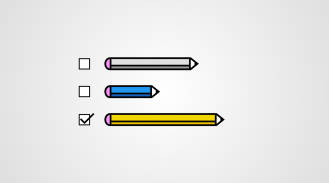It was simpler back in the day.
If you were a kid growing up near New York City, your favorite music came with a voice. In the afternoon, after school got out, the voice belonged to the wisecracking Dan Ingram. After dinner, it was the voluble, high-energy Bruce Morrow.
(There were other voices, in the morning and on weekends. But for most of us, Big Dan and Cousin Brucie stood out.)
A simple, effective brand voice

Dan Ingram held down the 2-to-6 time slot.
Amplified by a microphone that lent a slight echo to every word, those two human voices combined to give WABC a distinctive and recognizable brand voice. The voice told us that WABC was fun, in the know, up to date.
What was the hottest music? Every Tuesday night, we listened as Cousin Brucie counted down the new Top 20. Where to hang out? Palisades Amusement Park swings all day and after dark.
WABC’s distinctive, instantly recognizable voice, known to millions of people, came from a couple of voices. Simple.
Later: More content, still simple
When I started my technical writing career at IBM, things were still pretty simple. We didn’t produce voice content, but we did print shrink-wrapped technical manuals that all looked the same. Marketing created print ads, white papers, and spec sheets that shared a common design. IBM customers got lots of content, but only a few kinds of content. And with one glance, they could tell it came from IBM.
Today: Many sources, many outlets, jumbled voices
Today, your organization’s voice is delivered through advertisements and social media — and also through product screens, technical manuals, help systems, blogs, chat sessions, datasheets, videos, conference presentations, and probably dozens of other ways.
What do your customers, partners, and employees hear when they interact with all of this content? What messages do they receive? What’s the image of your organization that forms in their minds?
Chances are the image is blurry. Continue reading →

 What does that look like in real life? Well, the first priority is pretty much what you’d expect. If I’m listening to the team, I know where they need training and guidance. And I try to be responsive when someone has a problem. (I also rely on a couple of colleagues who can also step in and troubleshoot when needed.)
What does that look like in real life? Well, the first priority is pretty much what you’d expect. If I’m listening to the team, I know where they need training and guidance. And I try to be responsive when someone has a problem. (I also rely on a couple of colleagues who can also step in and troubleshoot when needed.)


